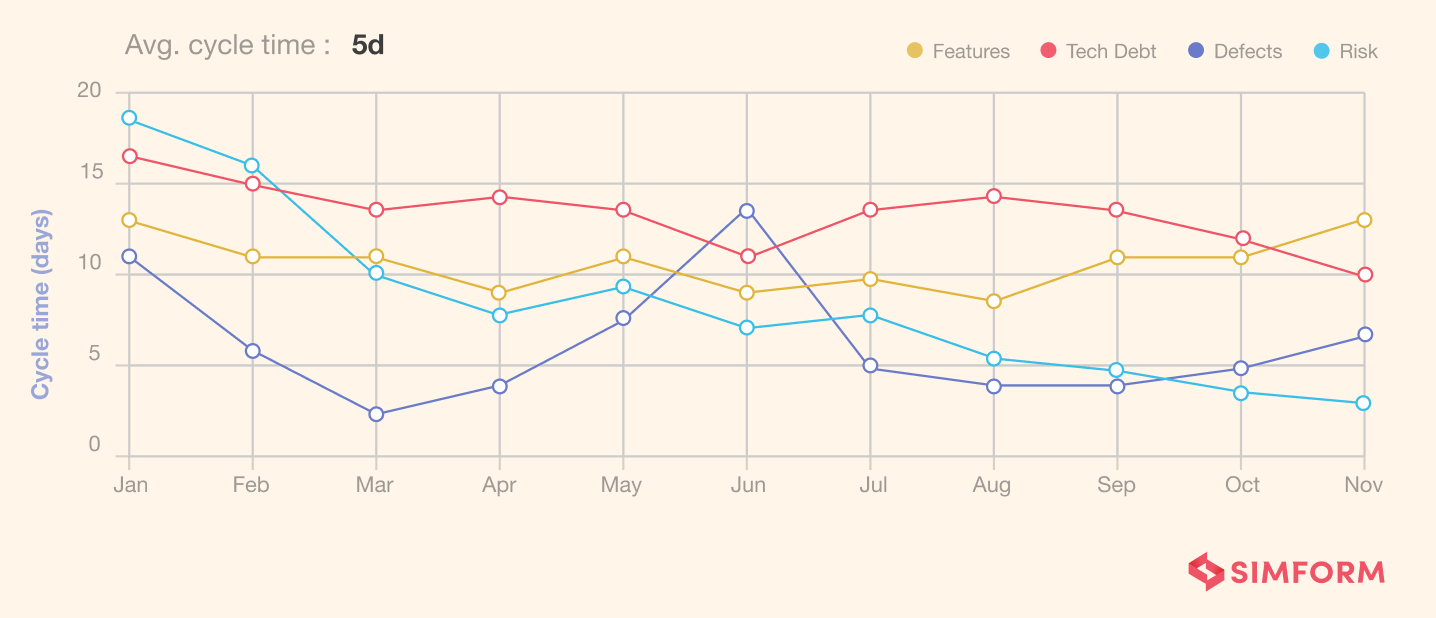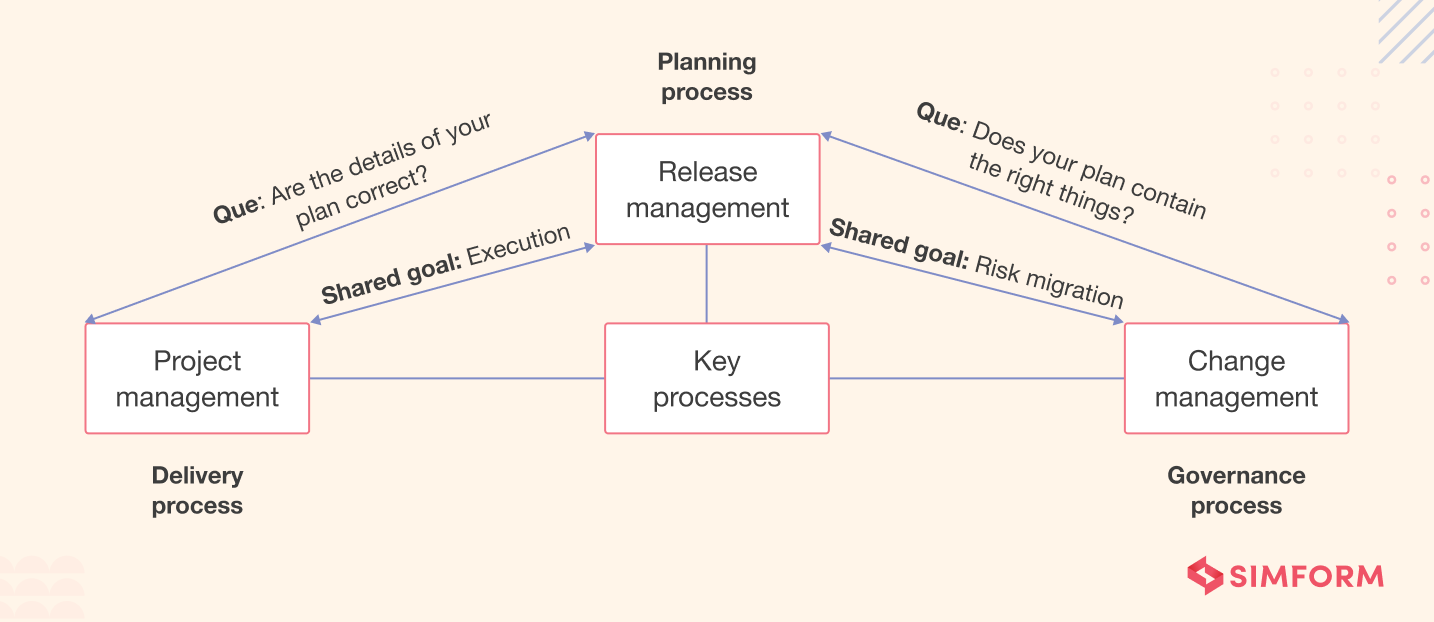Deployment and release are two terms in software engineering that are often used interchangeably. However, they are different! Deployment is a shift of software from one controlled environment to another. On the other hand, releases are a collection of changes for users to experience.
Applications need several updates, security patches, and code changes. Deploying them across platforms and environments requires proper management of releases. This is why it’s essential to have clarity on deployment vs. release.
Lack of release management can lead to irregular releases, manual delivery process, database update issues, collaborative problems, etc. Frequent integrations for releases can improve your software efficiency. However, the impact of Continuous Integration(CI) on the releases is limited as it focuses on development improvements.
At the same time, the Continuous Delivery(CD) process allows for the reduction of errors and automates software releases. The best practice is to use a CI/CD pipeline that offers frequent integrations and delivery automation. However, you need to know everything about deployment vs. release before setting up a CI/CD pipeline.
So, let’s understand the fundamental difference first!
What are the key differences between software deployment and release?
Deployment process involves the transfer of builds from one environment to another. Both the target and current environments are controlled during the deployment process. Some of the environments in which deployment activities occur are
- The development environment is where developers build the code.
- An integration environment is where new code gets integrated into an existing one and validated
- Test environments are where code testing happens, which includes both functional and non-functional tests.
- A staging environment is where applications are tested to ensure they are ready for deployment by mimicking the production-like environments.
- The production environment is the final step of the 4-tier architecture, where the latest versions of the software are pushed live to the intended users.
The deployment process is the last stage of the Software Development Lifecycle(SDLC). Therefore, managing the deployment is key to software delivery. It involves planning, verification of service components, target environment verification, and executing and confirming the deployment.
At the same time, software release is like a group of changed service components in a live environment- “minions in a birthday bash.”

In other words, a software release makes features upgrades and new changes available for the users. Like deployment management, managing software releases is also essential for efficient SDLC.
Release management includes several activities like planning, building the releases, integration testing, acceptance testing, preparation for the deployment, etc.
Once the changes in the software are approved, the release management begins. The next step is to plan and build the releases and test them for user acceptance. Lastly, releases are deployed in the target environments.
Deployment vs. release: key differences
Software releases and deployment are used interchangeably, which makes it confusing. So, here are some critical differences between deployment vs. release,
| Release | Deployment |
| A software release is a set of changes to be delivered in the production environment | Deployment is a shift of code built from one controlled environment to another. |
| There are frequent releases for updating the changes in production deployments. | It is the last phase of SDLC and is executed across domains |
| Has higher risks of exposing the users to buggy versions, errors, and issues in the software. | However, the risk of exposing users to error-prone builds is lower than releases as deployment occurs in a controlled environment. |
| The release code may not be production-ready, | Deployment codes are production-ready |
| Software releases are visible to users. | Deployed codes can run in any target environment inside the infrastructure |
ITIL management for a software release, and deployment
Information Technology Infrastructure Library(ITIL) is a framework that enables organizations to deliver efficient IT services. It is an umbrella term encapsulating activities like standardization of processes, deployment methods, and ways to manage releases.
However, we will discuss ITIL best practices that you can use for software release and deployment management.
Software releases need proper management to avoid problems related to future releases. Take an example of a movie like The Godfather. Release management best practices ensure that the movie’s second part is better than the previous version.
Similarly, the ultimate goal of the software releases is to have a better version than earlier versions. Release management needs extensive planning before the release plans, packages, and builds are sent for testing.
Release planning involves
- Specific business requirements for release units and details of application features’ upgrades
- Release data for major launches
- Pre-defined documentation process
- Extensive test plan
Elaborate documentation
Documenting the building of releases and ways to deploy them in the production environment is key to release management- How?
Build package documentation helps DevOps teams to improve efficiency with each release. Development and operational teams can access the documentation for further releases. Build process documentation needs to include
- Details on how to monitor the workflow
- Impact of release on the software
- Information on known errors.
Once the build packages are ready, the next step is to test them. Organizations must prepare a testing plan before the surface-level testing process.
Test planning and automation
One of the critical aspects of release management is testing. Surface level testing is a crucial process that enables organizations to validate the build before the release deployment into the production environment.
Smoke tests refer to the initial testing of the software release, which tests new builds for core functionalities. If a software build fails the smoke test, the build is deemed broken. Further, you must plan regression testing for in-depth software testing for every change required.
The best practice for release test management is to use automation. Once the build is tested, it’s time to check for deployment readiness.
Deployment readiness
Deploying your builds is the last phase of the release launch. So, you need to check if the build is ready for deployment. The testing phase ensures that there are no bugs and vulnerabilities in builds. However, deployment readiness needs a comprehensive check.
Here are a few essential things to check,
- Focus on the value delivery by ensuring the build is functional
- Check for compliance with the live environment
- Configuration management according to the live environment
- Monitor, fine-tune, and manage package binaries
These are some of the best practices that you can follow for release and deployment management based on the principles of ITIL. However, scaling your releases and deployment is another essential aspect of software delivery.
DevOps Outsourcing: How it Works, Benefits & How to Get Started
KPIs to measure for release and deployment scalability
Scaling your releases and deployment becomes key, especially when you have multiple platforms to deploy. So, how to ensure that scalability of releases stays consistent?
The answer lies in knowing the caveats that cause problems for builds. This is why defining the KPIs for measuring the performance of your software is critical. Here are some KPIs you need to measure for better scaling software releases and deployments.
Commits per active day
Each commit for the development team serves as a checkpoint. Smaller commits mean the frequency of checkpoints is higher, making the process more efficient. So, it is important to emphasize having smaller but higher commits per active day so that software engineers can analyze the evolution of their code changes.
Commit volume
The question that baffles many organizations is – what should be the committed volume for each release!? Higher volume management can be daunting, and lower volume does not guarantee better performance.
So, what’s the way out?
The best way is to ensure that your commit volume is based on feature requirements rather than on time. If a new feature is commit-worthy, you need to adjust the time between two commits for better performance.
Though it may take more time, it will reduce errors, too, ultimately improving the time-to-market. In addition, due to lower errors, testing time gets reduced, and you will have quicker but efficient software delivery.
Release cycle time
Cycle time for a software release relates to the time it takes to complete from the beginning of coding to deployment. It also involves the time needed for testing, QA approvals, staging, and final validations. The best approach is to reduce average cycle time through the DevOps approach, which helps through collaboration between operations and development teams.

Mean Time to Repair (MTTR)
MTTR measures the average time required to solve a bug or repair a failed component of the software release. Its purpose is to calculate the response time for your organization for specific errors. The best practice will be to reduce MTTR for your builds as it helps improve the time-to-market.
Number of outages
One of the most important KPIs to measure is how much downtime your releases are causing. An outage reduction is crucial if you want to scale your releases and deployments. So, you need to reduce the number and duration of two outages.
Several KPIs measure the effectiveness of your software releases and how it affects the scalability. However, commits per day, cycle time, MTTR, outages, and volume of commits help in understanding the quality of your releases.
Now let’s discuss how to improve your KPIs through some best practices.
Top methods to improve release and deployment efficiency
DevOps, continuous integration, and continuous delivery are some approaches that can help improve the software release quality.
Leverage DevOps culture for enhanced software releases
When you embrace the DevOps culture, operations and development teams work collaboratively to achieve better efficiency. However, DevOps is not restricted to operations and development teams. You can embrace a cultural approach to improving software quality and delivery.
Take an example of software release management. You can leverage the DevOps culture and create a cohesive strategy for software releases. One of the many benefits of DevOps is faster time to resolutions leading to rapid releases.
For example, Deutsche Telecom AG, a leading telecommunications service provider in Germany, was facing the issue of increased time to resolution. They used the “gain and share” DevOps model and automated more than 400 processes. They deployed 3000 Robotic Process Automation bots and improved customer satisfaction by 20%.
Introduce a CI/CD pipeline for seamless releases
Continuous integrations and delivery methods benefit organizations looking for enhanced software releases. CI/CD pipeline helps in the continuous integration of feedback and automates the delivery of releases for a faster time to market.
Tesla combined CI/CD, DevOps, and automation to deliver a seamless software experience. Tesla cars are connected to the company’s software, allowing developers to push releases into production environments directly on the vehicles.
Developers at Tesla needed to synchronize their software releases and significant component changes that occurred each quarter. So, they used a combination of DevOps and CI/CD to create a reliable delivery mechanism.
Containerize the releases for higher flexibility
Containerization is an approach for process isolation that enables the reduction of complexity in different environments. So, there is no denying that containerization is an excellent method to improve release and deployment efficiency.
For example, if you want to release your software build across multiple platforms, you can containerize each release with fewer binaries. The best part- you can terminate each container once the task is complete.
Now that we have discussed the fundamental difference between deploy vs. release and best practices for release management, it’s time to know some real-life examples!
Scalable CI/CD Pipeline Examples: Improve the Development Churn
What are real-world examples of software deployment and release?
Without wasting much time, let’s just discuss some examples that show improvements in deployments and release management per specific projects.
United Airlines’ software release issues and management solution
In 2016, United Airlines served more than 143 million users. However, the software release management was a massive challenge. There were several manual processes and spreadsheets, which increased the release cycle time.

So, United Airlines chose to leverage an onshore/offshore release model by shifting the role of release teams, ensuring specific commits were fulfilled. The best part about their release management approach was using the DevOps and centralized governance model. They managed to streamline releases with collaborations between the Continuous Delivery Team(CDT) and development teams.
News Corp Australia’s need for deployment automation
News Corps Australia needed to integrate Adobe tools into their software for enhanced enterprise functionality. However, integrating the tools into existing applications was a challenge. So, they developed a self-service access feature allowing employees to automate platform deployments.
The self-access service records each transaction and allows News Corp to monitor which employee is accessing a specific app. Further, they used automation to reduce the time needed to deploy each build.
Etsy’s waterfall woes and DevOps strategy to solve it
Etsy had siloed teams of developers, database administrators, and operations, making releases a difficult task. It took them weeks to get the builds ready. Apart from the long build process, deployments, merging the code with existing apps, and testing approvals were painful.
So, they gradually embraced the DevOps culture and further leveraged automation by introducing a continuous delivery pipeline. It allowed them to deploy more than 50 times a day for their applications.
Need an expert Devops engineer for your project?
Simform’s release management excellence!
Differentiating deploy vs. release will help you understand which approach enables efficient software delivery. Embracing approaches like DevOps and CI/CD is enticing but when it comes to execution, you need to pay attention to details. Everything from organizational workflows, specific roles, designations, and processes needs adjustment to the new approach.
Simform has been at the forefront of making the execution part easier for businesses. Over the years, our CI/CD experience has become extensive, empowering several clients with
- Superior release quality
- Right commit volume
- Higher release cycles
- Improved MTTR
- High code quality
So, if you are looking to improve the quality of software releases and wondering where to start, all you need is a 30-minute free session with our experts, Signup now!
